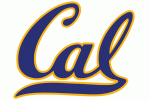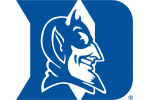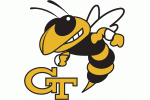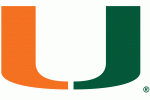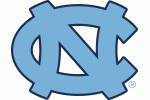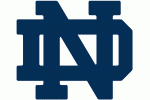The It wasn't pretty, as evidenced by the fact nine employees are facing a disciplinary process over this scandal.
 Kenneth Wainstein released the results of his investigation into the UNC AFAM paper class scandal. The full report can be found here.
Kenneth Wainstein released the results of his investigation into the UNC AFAM paper class scandal. The full report can be found here.
The report is a very thorough laying bare of the AFAM scandal including the roles of administrative assistant Deborah Crowder, former department head Julius Nyang'oro and various other individuals at UNC. It goes without saying the report paints a damning picture of a scheme to make classes available to students and student-athletes alike which did not meet the standards for courses at UNC. The report details Crowder's efforts to set the classes up, the gross lack of oversight by almost everyone who knew about them and some disturbing actions on the part of some to push athletes into these classes.
Here are some of the more relevant points in the 136 page report.
Deborah Crowder gets crucified.
From the very beginning of the report, Wainstein puts Crowder in the forefront as the originator of the "paper classes" saying she did so to help disadvantaged students and hinting that her love of UNC athletics also motivated the scheme. According to the report, Nyang'oro took over the department in 1992 and had a more "hands-off" approach than his predecessors giving Crowder free reign to set up what Wainstein called a "shadow curriculum." Nyang'oro was aware of the scheme and even served to facilitate it but according to the report it was all Crowder.
Specifically, she designed and offered what are called "paper classes." These were classes that were taught on an independent study basis for students and student-athletes whom Crowder selected. Like traditional independent studies at Chapel Hill or any other campus, these classes entailed no class attendance and required only the submission of a single research paper. Unlike traditional independent studies, however, there was no faculty member involved in managing the course and overseeing the student’s research and writing process. In fact, the students never had a single interaction with a faculty member; their only interaction was with Crowder, the Student Services Manager who was not a member of the University faculty.
Crowder provided the students with no actual instruction, but she managed the whole course from beginning to end. She registered the selected students for the classes; she assigned them their paper topics; she received their completed papers at the end of the semester; she graded the papers; and she recorded the students’ final class grades on the grade rolls. When Crowder graded the papers, she did so generously – typically with As or high Bs – and largely without regard to the quality of the papers. The result was that thousands of Chapel Hill students received high grades, a large number of whom did not earn those high grades with high quality work.
Nyang'oro's role is seen as being a facilitator who was at worst negligent and at best was pulled along despite misgivings. The scheme operated for 18 years and included 3100 students taking paper classes. AFAM class grades were "significantly higher" than other AFAM offerings. According to the report paper class GPAs averaged out at 3.62 while lecture AFAM classes had an average GPA of 3.28. Crowder did all of the grading for the paper classes and in some cases took a very loose approach to it. Wainstein also indicates that the inflated GPAs did help students' overall GPA and helped some avoid falling below minimum GPA thresholds.
Crowder eventually altered the way the classes were listed from independent studies to lecture style classes to avoid detection after UNC imposed limited on the number of independent studies that could be taken by a student.
What did academic support know about the classes?
According to the report, athletes made up 47% of the enrollments in the AFAM classes with 50.9% of those being football players and 12.2% coming from the basketball team. Olympic sports were the second biggest enrollment percentage at 30.6%.
The report clearly spells out a "dependence" on the courses by football academic support counselors. In one of the more troubling aspects of the report, those counselors pushed more enrollments just prior to Crowder's retirement in 2009 and even informed the coaches Crowder's retirement would complicate keeping players eligible. The following was a slide presented to the coaches regarding the loss of the AFAM paper classes with Crowder's retirement.

It was clear, based on this information and other testimony, multiple people in the athletic department were privy to the nature of the AFAM paper classes. It was well known they didn't require a class meeting, interactions with an instructor and they were generally much easier with the single paper requirement. As the report notes, the lax grading of papers means the quality of work wasn't very good, heavily plagiarized at times but still managed to received a good grade.
According to the report, the furor over the loss of the paper classes reach such a point that Nyang'oro eventually offered six more courses in this style following Crowder's retirement from UNC. Shortly after this, the media reports concerning Marvin Austin's transcript and Michael McAdoo's plagiarized paper led UNC to examine the classes involved. The first internal review took place at this point and the scheme was stopped.
Impact on basketball
Obviously the involvement of basketball is a focal point here given that the 2005 NCAA title team had multiple players availing themselves of the AFAM paper classes as revealed by previous report.
Men’s Basketball: There were 226 enrollments of men’s basketball players in the paper classes between 1999 and 2009. We spoke with 12 men’s basketball players who had knowledge of or took the classes. As with the football players, it was common knowledge among their teammates that these classes required little work for high grades. Unlike the football players, however, the basketball players seemed to find their way to these classes through a variety of routes. While the ASPSA basketball counselor –McSwain and then Walden – would occasionally suggest these classes, they did not routinely steer players into the classes without the players’ knowledge. More often than not, the basketball players found these classes either through referrals from their teammates – "locker room advising" – or via their direct relationship with Crowder, who always maintained close ties among the basketball team. Moreover, unlike the football players who largely conceded that these classes held little educational value, several of the basketball players insisted that they read extensively and worked hard to produce their papers for these classes.
The report shows there were was higher level of men's basketball player enrollment in the AFAM major but starting in 2007 those enrollments declined. Academic support counselor Wayne Walden told Wainstein that he was aware "how the classes worked" which included knowing Crowder handled the grading. As noted above, Walden and Burgess McSwain did steer some players to the classes and some players enrolled via a relationship with Crowder but nowhere does it appear basketball players were as dependent on the classes as football.
There is also the matter of what Roy Williams knew. Walden told Wainstein he didn't recall telling Williams what he knew about the classes. Williams become aware that several players were in the classes and discussed the issue with assistant coach Joe Holliday. Williams told Wainstein that he did not like players being "clustered" and wanted them to be in lecture style classes. WIlliams directed Holliday to reduce the basketball enrollments in the AFAM department. Holliday passed this directive onto Walden and according to the report, 2007 marks the beginning of a decline in AFAM enrollments for the basketball team.

It should be noted here, based on our own research at THB, that Michael Copeland and Quentin Thomas were the only AFAM majors on the team from 2007 on. Thomas graduated in 2008 and Copeland in 2009. Since then, UNC has not had an AFAM major on the basketball team. It also should be pointed out that Wainstein's report validates our rebuttal to The Big Lead which asserted Walden pushed AFAM classes until he left in 2009.
Wainstein noted in the Q&A segment of the press conference that he found both Williams and Holliday to be credible and Walden was a man of "great honesty." He also noted that the clear shift from AFAM classes in 2007 shows Williams was not complicit with the scheme and bolsters the credibility of his responses to questions about basketball player involvement in those classes on his watch.
As for Rashad McCants, the former Tar Heel failed to respond Wainstein's efforts to speak with him regarding his accusations aired on ESPN's Outside the Line. Williams denied ever telling McCants that classes could be swapped to keep him eligible but did discuss McCants staying in class in the spring of 2005 since the junior was leaving for the NBA Draft. Wainstein also indicates that McCants lack of response means there is no evidence to support his accusations within the context of the report. In addition, Williams also denied ever speaking to Mary Willingham and vehemently denies ever saying her job was to keep the players eligible. Williams said that would go against his philosophy.
Improper help and grade changes
Wainstein found three instances where academic support persons crossed the line in helping athletes. One was already known in the form of Jen Wiley. A second football counselor, Whitney Read, bent the rules to help unprepared football players complete course work. Both Wiliey and Read took their cue from learning specialist Beth Bridger who, in fact, "explained that they had more latitude than suggested by the compliance officer." In other words, Bridger directed her charges to ignore UNC compliance on how much help they could offer football players.
The other instance of illicit help came from Jan Boxill. Aside from Crowder, Boxill gets destroyed in the report. Boxill served as one of the tutors for the women's basketball program. In addition to providing illicit help on papers, Boxill also discussed grade changes with Crowder and even suggested grades necessary to maintain eligibility. This was also true of Cynthinia Reynolds who oversaw football academic support. Both women made grade suggestions to Crowder on the basis of what was needed to keep a player eligible for competition. Boxill, in addition to her duties as a tutor, is also a former Chair of the Faculty and presently a senior lecturer in the philosophy department. Her name previously came to light for changes made to a faculty report which Dan Kane attempted to hype as evidence of an cover-up.
NCAA issues?
The NCAA has been given a full copy of this report and will undoubtedly lean on it to some degree in deciding what to do next. Obviously the llicit help provided players by tutors(one of which has already been sanctioned), the disregard of guidance from the compliance office and outright requesting of grades stand out as clear NCAA issues that the governing body might want to address.
The rest of it is far more complicated and the water cloudy. Wainstein makes it clear the AFAM classes existed and were used by athletes with various officials knowing their true nature. However there are a couple of salient points. One, the classes were open to all students which negates any special treatment. Secondly, there is this idea that while people knew what the classes were, there was no reason to believe the classes were improper. This is a fairly important distinction and one Roy Williams himself noted. He assumed that if the school offered the class it must therefore be legitimate. He had no reason to believe otherwise and his ultimate objection to AFAM was on the grounds of players clustering and more lecture courses. The way the classes were run may have seemed unusual to people and those people knew the classes were easy but steering athletes into easy classes doesn't necessarily consitute an NCAA violation.
Again, the NCAA isn't in the business of governing curriculum and overseeing academic departments. They want nothing to do with deciding which classes are kosher. That being said, the GPA information presented in the report is a nod towards the idea that eligibility may have been maintained by some athletes using these classes. If that's the case, does the NCAA want to dig into whether the classes served as award academic credit in a fraudulent manner for the sake of making a player eligible. There is also the matter of the grade changes requested by Boxill and Reynolds. If it happened with those two tutors, did it happen in other cases?
The point here is there may still be any number of questions the NCAA would like to ask based on its own rulebook. There is no timetable for when the NCAA will finish its second probe into UNC athletics. In the meantime, UNC will sit and wait for the governing body to make the next move.
Other Notes
Chancellor Carol Folt indicated they have begun the disciplinary process against nine employees, some of which will be or may have already been terminated. One of those is almost certainly Jan Boxill whose actions, as spelled out by the report, leave her career in serious jeopardy. Folt, to her credit, took a strong stance on this report being a full accounting of the scandal and emphasizing the need to move forward with reforming the school to address the concerns raised by the report. Most of those reforms have been in place for quite some time with others still in the offing.
Finally, it should be noted that no school or entity could submit to an investigation of this nature and emerge unscathed. UNC had a litany of problems and for the most part there isn't terribly much in the report we didn't either know or largely suspect. The report provides the origin story of the AFAM paper classes, the motivations behind those who created them and fleshes out the appalling lack of oversight that permitted them to exist for 18 years. This was the report that should have been published two years ago. The report which put all the cards on the table. Are there still questions? Sure there are but I dare anyone to argue the report didn't finally put the whole story of the AFAM paper classes before the public in a way that may allow UNC to finally move forward.



